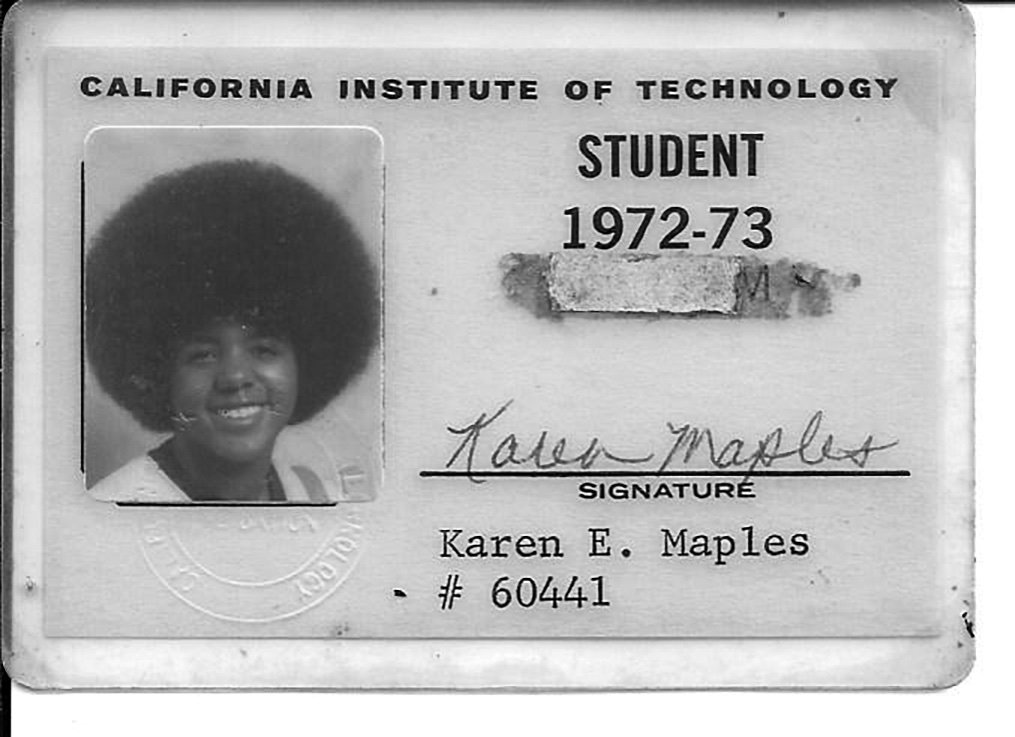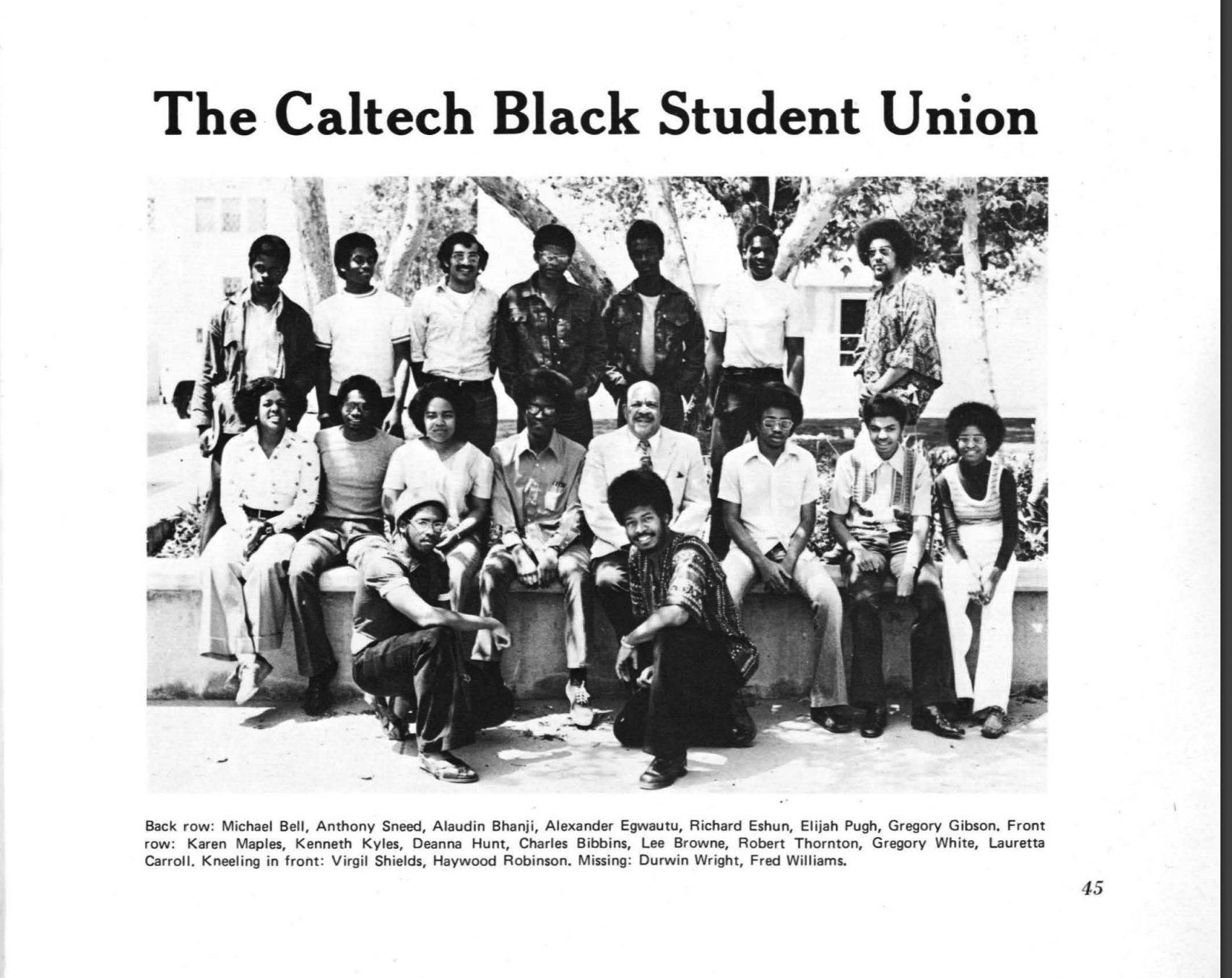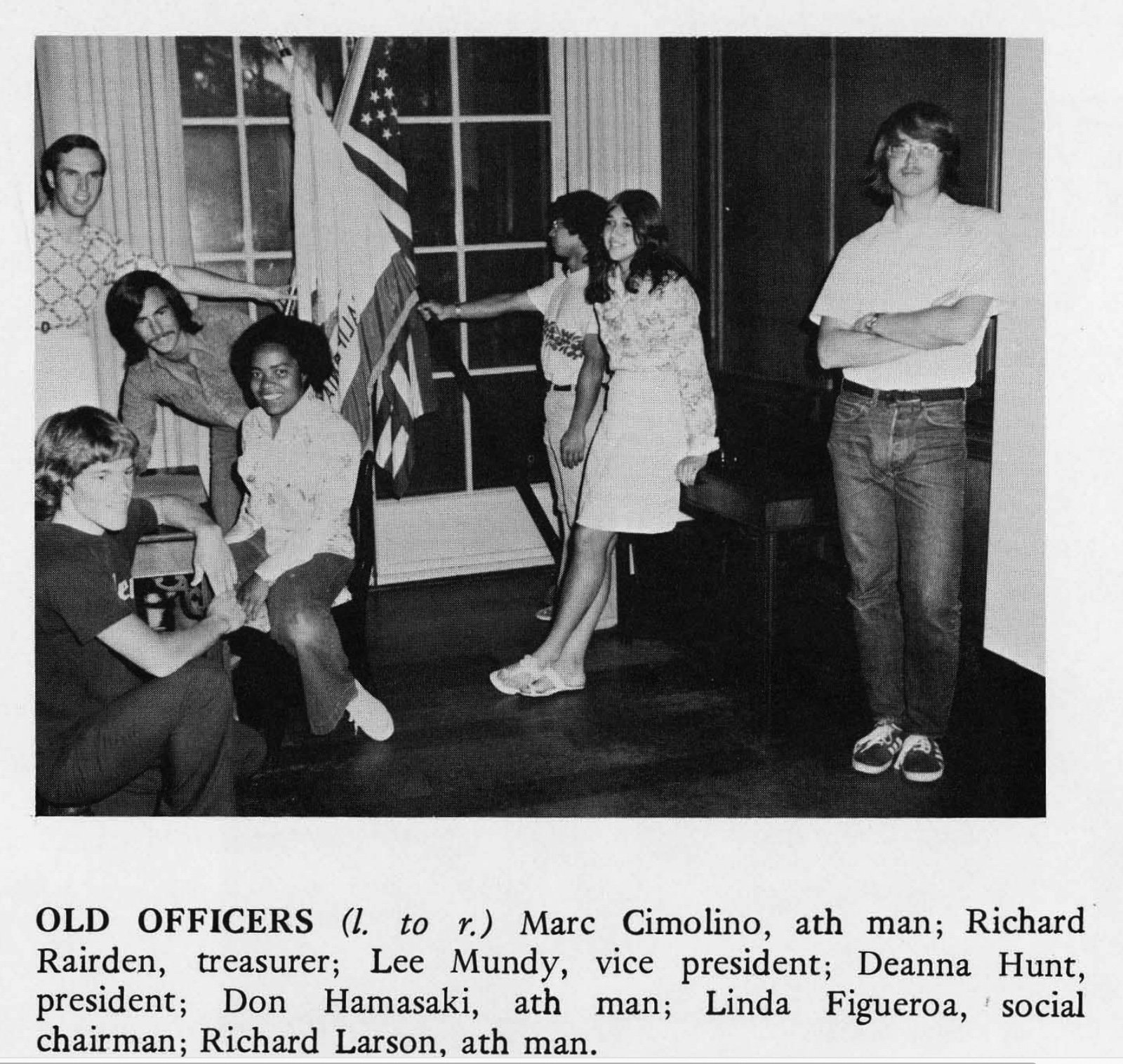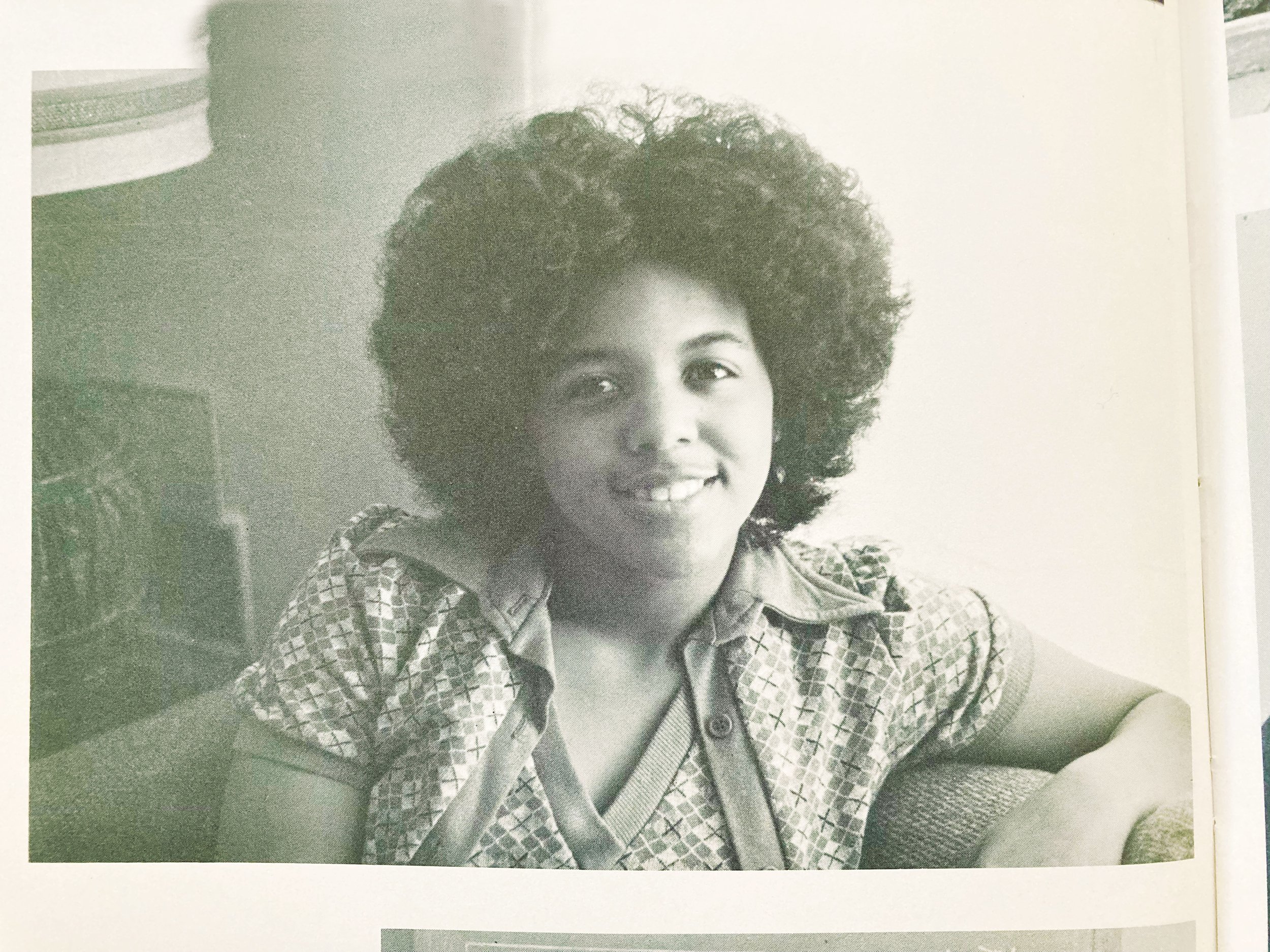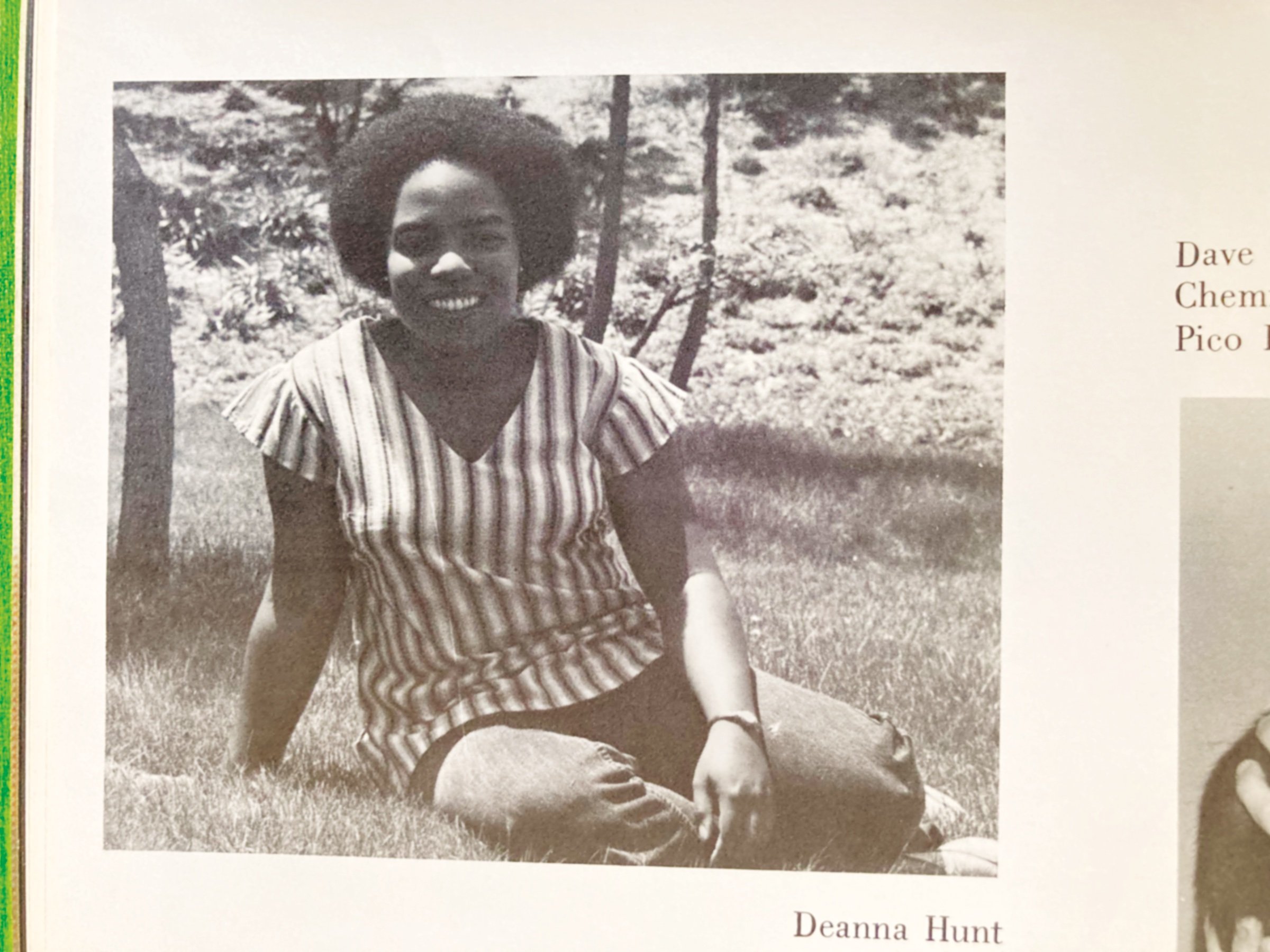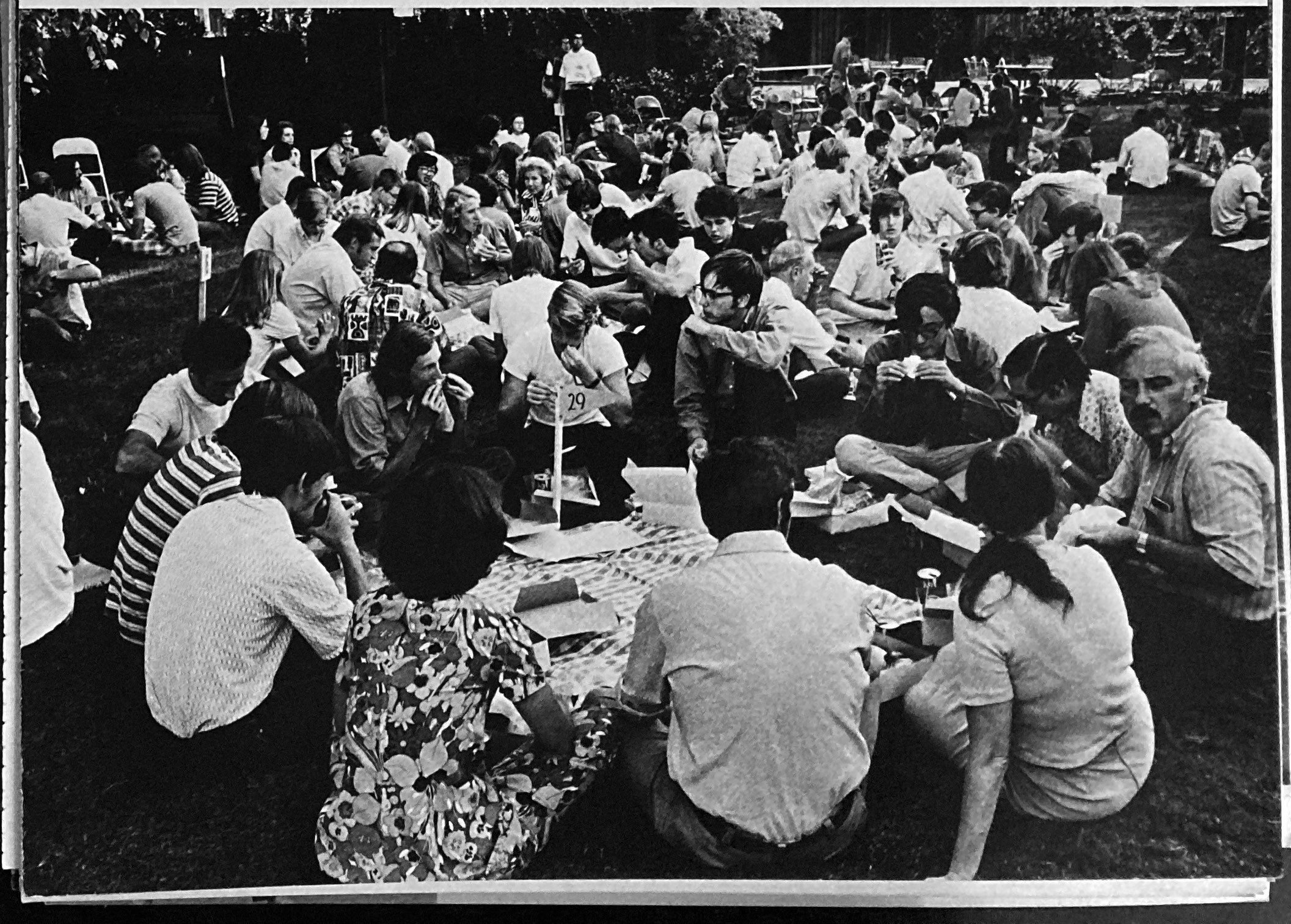Reflections on ’72 From Caltech’s First Black Alumnae
Fifty years later, the first three Black women to enter Caltech as students look back on their experiences.
By Lyndie Chiou (BS ’96)
On a smog-filled weekend in the late summer of 1972, three Black women walked onto the Caltech campus for the first time as students enrolled at the Institute. This milestone came two years after the first female undergraduates were admitted, 17 years after Caltech first awarded a PhD to a woman, and 40 years after the first Black man had received a diploma.
All three women—Karen Maples, MD (BS ’76); Deanna Hunt (BS ’76); and Lauretta Carroll (BS ’77)—had taken different paths to Caltech and, afterward, went on to lead distinct and distinctive lives.
Coming to Caltech
For Maples, the road to Caltech began when she crossed paths with Lee F. Browne, who joined the Institute in 1970 as director of secondary school relations, a role he held for 20 years. (Browne was recognized recently for his contributions to the Institute and the broader community of STEM students with the naming of the Lee F. Browne Dining Hall.) During his tenure, Browne developed several successful outreach programs to encourage students from underrepresented backgrounds to consider careers in science. He traveled tirelessly to cultivate relationships with high school counselors at hundreds of schools throughout California. Maples, who grew up in Berkeley, credits Browne for her decision to apply to the Institute.
“I didn’t know about Caltech at all, but he came to Berkeley High and was looking for folks who had an interest in math and science,” Maples said. “I was an African American female with good SAT scores, so I was super-recruited. But Lee Browne really promoted Caltech, so I applied and was able to get in.”
Lauretta Carroll. Courtesy of Lauretta Carroll.
In a 1999 Caltech oral history, Browne noted that expanding access to and awareness of Caltech and STEM studies for all students was the focus of his job: “I believe that anybody that wanted to do science and mathematics and engineering ... should be able to go wherever they wanted to go to school,” he said.
Browne’s visit piqued Maples’s interest in the Institute, but she says money was the deciding factor, and Caltech had made her an attractive offer. “It came down to financial aid more than anything.”
For Maples’s classmate Hunt, the choice to attend Caltech was simple. “Location, location, location,” she says, laughing. The Compton native was accepted to both Caltech and MIT with full-scholarship offers. But Caltech was close to home, which would allow her to remain close to family. While the women knew they would be the first Black female students to enroll at the Institute, Maples says that the significance of their presence at Caltech did not fully hit her until she walked onto campus.
“It was a culture shock coming from Berkeley, which had a very vibrant community. Caltech was not like it is today. It was a beautiful campus, but I soon felt the total shock of being the first Black woman to set foot on campus as a student. It was a disorienting experience,” she says. “The day I arrived on campus was the first time I’d ever seen Caltech.”
Carroll came to Caltech from the West Adams neighborhood of Los Angeles, which was a thriving middle-class Black community in the 1970s. Her mother owned the Elegant Manor, a landmark home where neighbors young and old would gather for social occasions. It was Carroll’s high school physics teacher, John Essick (MS ’43), who persuaded her and two other classmates—James Hong (BS ’76) and Elijah Pugh (who later transferred to Cal State Los Angeles and earned a PhD from Howard University)—to apply. It did not take much work on Essick’s part. “He said, ‘Lauretta, there are two things in life that you want to do: learn to ski and go to Caltech,’” Carroll remembers. “I did not like skiing that much, but he was right about Caltech.”
Lauretta Carroll, center, in 2013 with her oldest son, Joseph Van Valen, left, and youngest son, David Van Valen (PhD ’11), right, a Caltech assistant professor of biology and biological engineering, and a Heritage Medical Research Institute investigator. Courtesy of Lauretta Carroll.
Major Choices
Carroll quickly realized that her high school had not equipped her with all the academic skills needed to succeed at Caltech. “I got there with an incredible deficit,” she says, “and there was a huge vertical learning curve. But I managed to get through.”
She recalls being in no rush to pick a major and says she swung like a pendulum between subjects such as geology and English. “I was having way too much fun,” she says. Her mother finally put an end to her laissez-faire attitude with a surprise 7 a.m. visit in her third year to tell her it was time to start thinking about a job.
“I knew when she was dead serious, and I never messed with her during those moments,” Carroll recalls. “That day, I went to the career office and asked if they would show me the starting salaries of all the disciplines. Engineering was at the top.”
With her mind made up to become an engineer, she booked an appointment with her advisor to discuss her new major. “I remember talking to my advisor at that time ... a middle-aged white guy talking to a young Black woman. I’ll never forget what he said: ‘You know, Ms. Carroll, you’re going to have to pass AMa 95 [Introductory Methods of Applied Mathematics].’ That was a make-or- break class for engineers at that time. I just smiled and said, ‘OK.’ He didn’t realize it, but at that moment, he gave me a challenge. Not only was I going to pass it, I was going to do well.”
Carroll aced the course, graduated from Caltech, and landed her first job at Hughes Aircraft. “My mama was happy, and I was happy, so it worked out well,” she says. She received a scholarship from Hughes to do postgraduate studies at Cornell, where she went on to receive a master’s degree in electrical engineering in 1979.
Since 1983, Carroll has run her own software company, Practice Today, which is geared toward health professionals. She has also rekindled an early passion for biology, enrolling in biology classes at a community college. She says the experience has made it clear to her that, as an undergraduate student, she hadn’t appreciated the special environment Caltech offered. “I had no idea that magic was happening. At Caltech, I needed to take biology, and there was no textbook; they were using all the papers straight off the press. I was so irritated that there was no textbook that I dropped the class. But lo and behold, the people teaching that class were the same folks I’m reading about now.”
While Carroll worked hard to keep her head above water in her first year, Maples and Hunt had a smoother transition to college life. They took on extra responsibilities, which they both say shaped their future roles in leadership.
Maples held a litany of positions during her student days: she was president of the Caltech Y, the head usher at Beckman Auditorium, a salesperson at the Caltech Ticket Office, scorekeeper for the Caltech track and field team, a lab technician at Huntington Memorial Hospital, and a two-time summer research fellow at JPL.
While Maples had arrived at the Institute with the intention to pursue math, she soon changed her mind. “Everyone starts out in math or physics,” she explains.
“I went down the rabbit hole of theoretical math classes and realized that math was no longer appealing to me, so in my third year, I switched to biology. There was a professor, Ray Owen [professor of biology, emeritus], who was a great teacher. Leroy Hood [BS ’60, PhD ’68] was also there. Undergrads had the ability to do research, and I spent a lot of time in the animal lab with rats. I didn’t want to deal with rats for the rest of my life, so I opted to apply to medical school.”
Karen Maples, MD, in 2009 after her patient, Nadia Suleman, gave birth to octuplets. Courtesy of Karen Maples.
However, the decision came with tremendous stress, Maples says, because it meant she would embark on a much different career path than she had originally planned—and one that a professor of hers did not understand due to Maples’s talents as a researcher. But Owen, Maples’s mentor, supported her decision. She went on to attend UCLA Medical School and has worked as an OB-GYN at Kaiser Permanente for 38 years, where she has provided care to thousands of pregnant people, including “the Octomom,” Nadya Suleman, who famously had 12 embryos simultaneously implanted in her womb. After eight of the embryos successfully developed, Suleman’s prenatal care fell to Maples. “Because I was the chief of the department, she became my patient for the duration of her hospitalization,” she says. “There were 52 people involved in this delivery, and I’m not kidding you, we practiced for months.”
Hunt entered Caltech as a chemistry major and stayed with the discipline, finishing with an emphasis in bio- chemistry. She says she found mentors everywhere during her Caltech years. “They ranged from RAs to members of my house, to faculty and grad students,” she says. “Mentorship varied from year to year, and I also mentored others, which taught me the importance of mentors.”
Hunt became the first woman elected Blacker House president. “That taught me a few lessons in political maneuvering that helped in my corporate life, such as that power and influence are not necessarily held in the top positions,” she says. After starting her career as a bench chemist in the pharmaceutical industry, Hunt moved into regulatory compliance and ran a pharmaceutical consulting business for 22 years before she retired in 2020.
Encountering the “Isms”
In the ’70s, Dabney House was the epicenter of Black social life at Caltech, with the largest population of Black students. This motivated Maples to join. “Dabney seemed to be just accepting of all different types of folks, and the social network was really within your house more than anything,” she says.
Hunt, meanwhile, was in Blacker, and Carroll was in Lloyd. “Karen, Deanna, and I were alpha females,” Carroll says. “We were highly motivated and self-confident. We found our own space at Caltech, while respecting each other’s space.”
Deanna Hunt in 2022. Courtesy of Deanna Hunt.
The women had the common experience, however, of encountering the “isms,” including racism. “During my undergrad days, I did not have a word for what we now call microaggressions, but the concept was ever present,” Carroll says. “There were incidents where I had to show my student ID to prove I belonged, like on the tennis courts or in the library late at night.”
However, says Maples, “there was more sexism than racism. I just pushed forward with the notion that I belonged.” It was nothing she had not already experienced, she adds. In high school, Maples had tried to get a summer job at an oil company that recruited male interns from her chemistry class. Despite her pushing back and getting an interview, the company still refused to hire her. “That experience stayed with me,” she says.
Hunt has similar memories. “I did experience racism, but it paled in comparison to the sexism,” she says. “Honestly, the negative experiences were mostly couched in sexism, although racism was likely in the mix as a lot of ‘isms’ are fellow travelers.”
Maples offers some advice to Caltech students who might confront comparable experiences. “Reach out to your mentors, make use of the alumni.” As a mentor, she says, “I would encourage you that you can make it.”
While each woman had to overcome challenges, some common and others personal, there is no doubt in their minds that they are where they are today because of Caltech.
“I became very successful because the Caltech thinking process trained me in the importance of taking all this data and translating it into patient management,” Maples says. “I was able to get into the residency of my choice and go on to Kaiser Permanente.”
Hunt agrees, saying that Caltech instilled in her a new way to approach and pursue knowledge. “Caltech taught me that knowledge is readily available; you don’t have to carry it around with you,” she says. “It is more important to know where to find information and how to use it to answer a question. It is impossible to know everything that you will need.”
As for Carroll, she wishes she could go back and be a student again. “You would have to literally drag me off that campus if I had the chance of doing it over,” she says. “I could see myself staying there forever.”
Lyndie Chiou, a Caltech Black alumna, graduated with a bachelor’s degree in applied physics in 1996. She works as a scientist and science writer, and she is the founder of ZeroDivZero, a website for science conferences. Her writing has also appeared in Quanta Magazine, Scientific American, and Sky & Telescope. Follow her on Twitter @lyndie_chiou.




